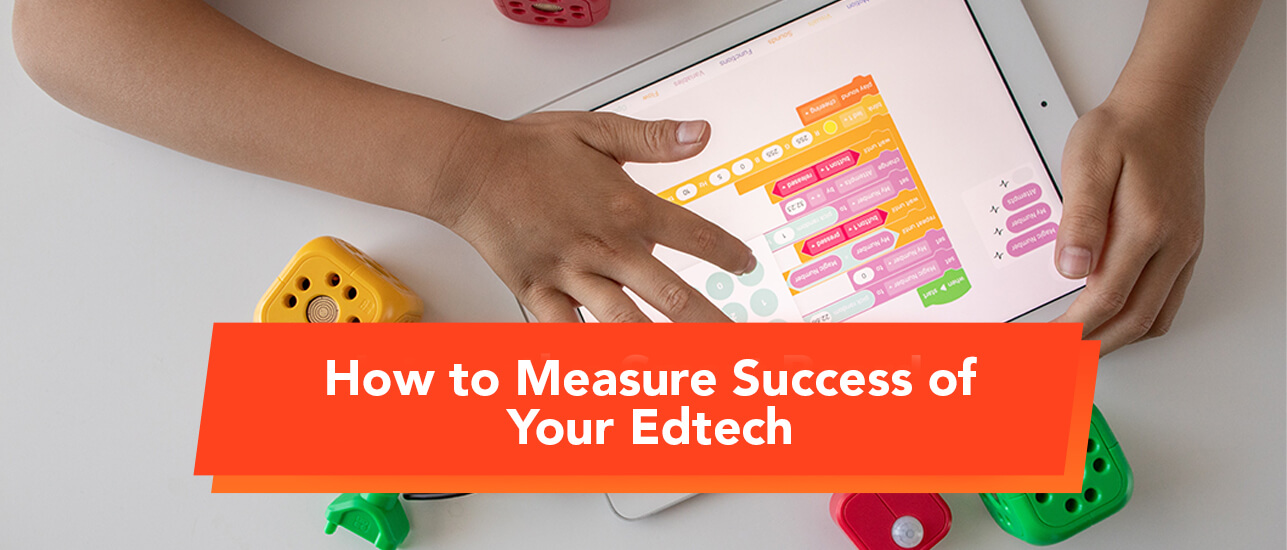Published on April 20th, 2021
Measuring Success
6 minute read

How to Measure Success of Your Edtech: It Might Not Be Easy, but It’s Possible
A recent study shows two-thirds of edtech software licenses go unused – a huge chunk of wasted money that schools could better use elsewhere. A critical measure of edtech success is its adoption. Is there buy-in from the top? Are teachers and students using it? More importantly, are teachers using it effectively to reach their students? And what is the return on investment? How can that be measured?
There’s no doubt that implementing edtech can increase classroom collaboration and engagement when teachers and students are energized by it – and ultimately use it – but measuring success is tricky and often takes years.
However, setting goals for what you want edtech to help the school achieve and collecting data before, during, and after implementation can help districts understand whether the investment was worth the price – and can help guide better, more informed decisions going forward.
To ensure edtech is effective, educators must examine the evidence that’s available to make careful decisions – about what is or isn’t working – and determine the edtech path forward.
-
Do your homework
Edsurge reports many of the nation’s schools have invested in apps or programs claiming to change education for the better. And yet, “schools are littered with products that have not changed anything beyond teachers’ desktop screens.” The report also shows teachers and administrators are largely on their own when it comes to making edtech purchasing decisions. Knowing the benefits of a solution is one thing, but understanding them well enough to fully leverage them in the classroom day-to-day is another.
Researching products before buying can help ascertain whether the edtech under consideration lives up to its promises.
Free services are available that provide summaries of research on educational tools and programs. The Ed Tech RCE Coach, for instance, takes a school’s data and helps it answer questions like, “Did our edtech program lead to the outcomes we hoped for?” and “How can we set up meaningful pilots of the newest edtech available?”
And Evidence for ESSA is a web-based resource that provides access to information on programs that meet the evidence of standards defined in the Every Student Succeeds Act (ESSA).
Additionally, some educators use companies that help districts link their edtech usage to student achievement information and goals to find out whether those tools deliver the desired effect.
-
Ask for peer input
Some simple ways to determine what edtech could be the best fit or to decide what to invest also includes:
- Finding out what has worked well for your peers – Before making a purchasing decision, seek information from other schools to find out what edtech was working well for them. What successes and failures did they see? Did they have any measurable outcomes?
- Setting objectives and goals for what edtech should help achieve – and then measuring them.
-
Ensure teacher buy-in through adequate training
To achieve measurable success, researching and simply purchasing technology isn’t enough. A critical measure of edtech success is its actual adoption because if teachers aren’t using it, then students aren’t learning from it.
Stakeholders must be engaged beyond the initial launch of devices. This comes through adequate training, so educators are comfortable and proficient with edtech.
A recent State of Technology survey found over half of educators and administrators say teachers at their school receive some education technology training and support, but more could be done. The survey also found 44% of respondents believe teacher training on technology should be prioritized first to make remote learning more successful.
Therefore, when gathering data to show whether edtech either has been or can be successful, make sure your teachers are properly trained to use it. If you’re about to make an investment, find out what on-site and online training a vendor provides, and whether that training is ongoing. And when technology purchases or improvements occur, make sure teachers know about it.
In summary, measuring the success of edtech comes in many different forms: Test scores go up. Teacher adoption increases. Student engagement grows. Set goals for what you expect from technology investments and make sure you collect student data before, during, and after using it. When it comes to considering an edtech investment, research is crucial to making the best-informed decisions possible. And make sure teachers are adequately trained because if they aren’t, your edtech investment could become wasted money.




